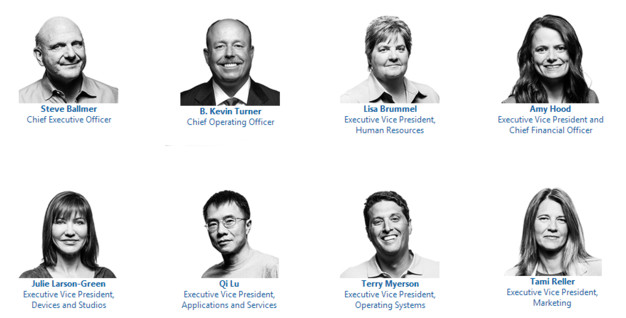Microsoft CEO Steve Ballmer has recently announced his decision to retire, leaving during what could safely be considered one of the largest reorganizations in the company’s history.
While only little has been said about the reasons behind’s Ballmer decision, people familiar with the matter have hinted several times that several members of the board no longer agree with the direction the company is heading to.
What’s more, ValueAct, the investing firm that purchased a $2 billion (€1.5 billion) stake in April, was also planning to replace Steve Ballmer and make the Redmond-based giant focus more on key products such as Windows.
“There is never a perfect time for this type of transition, but now is the right time,” Ballmer said in the statement announcing his decision to retire.
“We have embarked on a new strategy with a new organization and we have an amazing Senior Leadership Team. My original thoughts on timing would have had my retirement happen in the middle of our company’s transformation to a devices and services company. We need a CEO who will be here longer term for this new direction.”
Microsoft with Steve Ballmer
Steve Ballmer joined Microsoft on June 11, 1980 and was the 30th employee of the company and the first business manager hired by co-founder Bill Gates. He quickly became one Gates’ closest friends, so it’s no surprise that he always had the support of the man who created the biggest software company in the world.
Ballmer was officially named Microsoft CEO in January 2000, even though Gates continued to hold the chairman position until 2006 when he decided to retire completely and focus only on his charity work.
He was in charge of several divisions during the time he spent at Microsoft, including operating system development, sales and support, and operations. He joined the company has a business manager with a salary of $50,000 (€37,500), but he was quickly promoted to Executive Vice President of Sales and Support and then President of the company.
According to Forbes, Steve Ballmer now has a net worth of $15.2 billion (€11.3 billion), which makes him the 22nd richest man in the United States and the 51st in the entire world.
Bill Gates and Steve Ballmer are very close friends, so the CEO always had the support of the man who founded Microsoft. Steve Ballmer is the man behind several successful Microsoft products, even though some of the latest company projects, including Surface and Windows 8, are yet to excite.For example, Ballmer has managed to boost Microsoft’s annual revenues from $25 billion (€18.7 billion/0 to $70 billion (€52.4 billion), while less successful divisions, such as the Xbox unit, reached $8.9 million (€6.6 million) under his leadership.
And still, it appears that Ballmer’s new vision is the main reason for the avalanche of criticism that has fallen over Microsoft lately.
Windows 8 is yet to help the collapsing PC market, while the Surface tablet is only selling in small numbers across the world. The operating system has barely reached a 5 percent market share more than 6 months after launch, while the tablet caused a $900 million (€770 million) loss due to unsold units.
Microsoft without Steve Ballmer
Now that Steve Ballmer is almost gone, it’s pretty difficult to imagine what’s going to happen next. It would be insane to think that if Ballmer leaves, Microsoft could bring back the Start button in Windows, for example.
No, that’s not going to happen, and the explanation is pretty simple: Ballmer wasn’t making any decisions all by himself.
A report that came out this morning and citing sources close to the matter indicated that ValueAct, the company that recently purchased a $2 billion (€1.5 billion) stake in Microsoft, is looking into ways to make the firm focus more on what’s really important. In other words, dump the unnecessary stuff and keep what’s making money.
Windows will most likely remain the key product for the company, but ValueAct wants Microsoft to continue developments in the software area, while also paying much more attention to hardware.
The Surface tablet was one of the projects that brought Ballmer in the spotlight, with the CEO being often criticized for Microsoft's direction in the hardware market.New Surface tablets are very likely to be released in the future, and taking all recent rumors into account, the second generation is expected to be launched sometime this year, probably in October together with Windows 8.1.
The transition to a devices and services approach will be continued, even though this was Ballmer’s own vision. It’s the right way to go though, and most shareholders most likely know this.
Microsoft needs to expand into some other sectors than software, but it needs to do it right. With Windows 8.1 already around the corner, Windows 9 is probably the first product that will include a non-Ballmer touch. If there will be one.
According to some analysts, ValueAct is pursuing some major changes, including getting rid of the Xbox unit. That’s right, the Xbox unit isn’t yet considered a source of profit, so some shareholders apparently believe that selling it to another tech company would be the right decision.
While this could sound crazy for many people, it might actually make sense for the next Microsoft leadership team, but it remains to be seen if the new administration is going to risk so much on the short term.
Who’s next?
It’s hard to predict who’s coming after Steve Ballmer, but there are a few Softies out there that could get a chance to be named the next Microsoft CEO.
Julie Larson-Green, a former Windows boss and currently the executive vice-president of the Devices and Studios group at Microsoft, has one been considered a potential Ballmer replacement, but she’s now very unlikely to be granted so much power. And so is Tami Reller, the executive vice president, marketing, who joined the company in 2001.
COO Kevin Turner and Executive VP Tony Bates are also in the race for the CEO position, with the latter one of the favorites to take over the helm at Microsoft once Ballmer retires.
The press release rolled out by Microsoft today reveals something really interesting: the company is considering both external and internal candidates.
While the internal candidates are pretty obvious, is there anyone outside the company that could become the next Microsoft CEO?
Here are the people that could replace Ballmer at the helm of the company. Steven Sinofsky is missing from the picture because he is no longer a Microsoft employee. He's in pole-position to become a CEO, though.There is, and the first name that comes in mind is none other than Steven Sinofsky. The man who’s been in charge of the Windows division until early November has all the chances in the world to be named Microsoft CEO. Although he’s very unlikely to return to Microsoft, Sinofsky has the support of both consumers across the world and the company’s shareholders.
Sinofsky left in November after growing tension between him and Ballmer, with some sources claiming that the former Windows chief wanted to become a CEO after the debut of Windows 8. Steve Ballmer initially wanted to hold the position until 2017 or 2018, so Sinofsky decided to leave. This would indeed be a great moment to return.
Last but not least, Stephen Elop, CEO of Nokia, one of the key Microsoft partners this year, is also said to be a potential replacement for Ballmer. He previously worked as a president for Microsoft’s Business Division, but left the company in 2010 to become CEO of Nokia.
In the end, it’s not really important who’s coming after Steve Ballmer. But whoever takes over such an important role must keep in mind the only thing that started the anti-Ballmer revolution: users are the ones that count the most.

 14 DAY TRIAL //
14 DAY TRIAL // 

